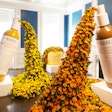
Say what you will about Miley Cyrus’s performance at the MTV Video Music Awards (pictured)—and that’s exactly the point. Her spectacle delivered the buzzy controversy the show is known for—remember when Kanye West interrupted Taylor Swift in 2009? Such dramas are what the event thrives on. Meanwhile, Seth MacFarlane proved a polarizing first-time Oscar host, and Amy Poehler and Tiny Fey’s co-hosting duties of the Golden Globes made them some of the most coveted hosts in the business; they’ve already signed on to host the Globes next year and in 2015.

The scantily clad hired brand reps, omnipresent at shows like Comic-Con and the Electronic Entertainment Expo (pictured) are turning off an increasing number of showgoers and industry folks alike. This year, amid calls to ban booth babes, the Consumer Electronics Show updated its policy on exhibitor and presenter attire. In the event industry, the debate continues. “We can all agree that objectifying women to drive a marketing initiative is a bad move. It’s unseemly and doesn’t jibe with a good marketer’s moral compass. But, let’s not deny it: For the right audience, with the right brand—sex still sells,” argues one event professional.
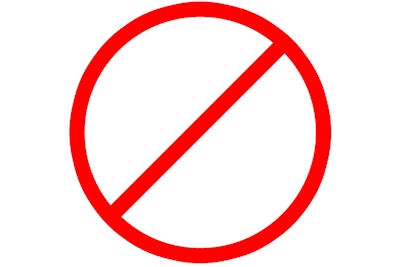
Brands, events, and entire cities faced boycotts in 2013 as the public reacted to various civil and human rights issues. This year saw some notable actions, including entertainers such as Stevie Wonder, Kanye West, and Jay Z boycotting Florida to protest the state’s “Stand Your Ground” law and George Zimmerman’s acquittal in the death of teenager Trayvon Martin. Consumers called for a boycott of Barilla pasta after homophobic comments from its chairman. And one boycott will continue to make news into the new year: Activists are calling for a boycott of the 2014 Winter Olympics in Sochi, Russia, to protest the country’s antigay laws.
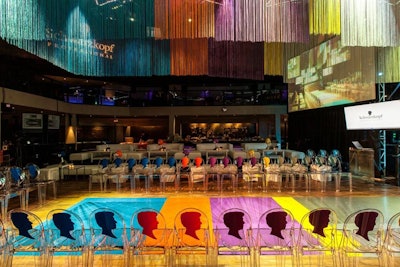
Color blocking popped up everywhere this year, from the bright decor at the Phillips Collection’s formal gala in Washington to the rainbow-hued runway at Schwarzkopf’s hair fashion show in Los Angeles (pictured).
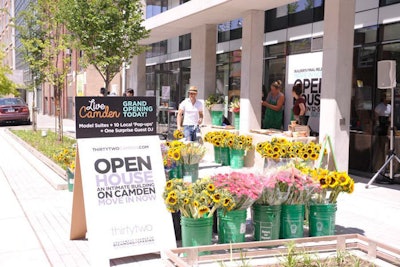
As the housing market recovered, condo sales parties made a big return to present the properties to prospective buyers. Successful sales events developed a theme around the property’s style and location, making the events extensions of the brand. Neighborhood businesses created pop-up experiences, and a yacht was even used as a backdrop.
Pictured: An open house for a boutique condo development in Toronto.

Of all the quirky food mash-ups this year, the biggest phenomenon was the Cronut. Half croissant, half doughnut, the hybrid treat by pastry chef Dominique Ansel had New Yorkers lining up at dawn. It wasn’t long before other bakeries and caterers made knockoff versions.
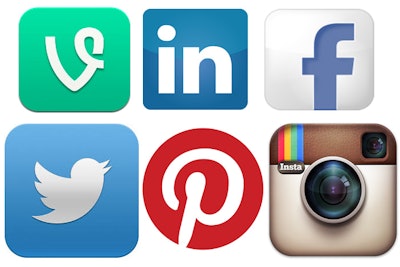
As more corporations draft social media policies to define best practices for employees, industry professionals are also looking at how their companies, events and meetings, and staffers interact with attendees on digital platforms. The producers of New York Comic Con learned their lesson the hard way in October when they drew strong criticism for a social media initiative tied to the show’s R.F.I.D.-enabled badges. Attendees who linked their Twitter presences to their badges found that producer ReedPop posted pre-written tweets on their behalf, with language like “So much to see, so much to do!” and “So much pop culture to digest! Can’t. handle. the. awesome.” The misstep made news reports in dozens of media outlets, and one critic even dubbed the move “one of the worst social media gaffes we’ve seen in a very long time.” The organizers quickly apologized and shut off the function.
Lance Fensterman, global vice president of ReedPop, said he learned that event hosts looking to tweet on behalf of attendees need “crystal clear” opt-in language—“it was too vague”—and should probably include the actual wording of the tweets.
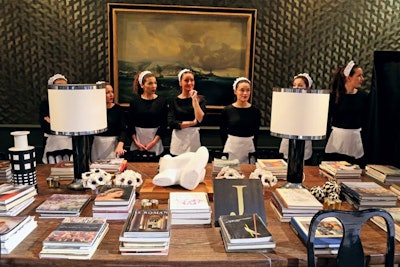
The popularity of the PBS series Downton Abbey had many event hosts moving toward more stately, residential decor looks. As rental companies stocked up on vintage pieces and library-inspired furniture, H&M made its Paris Fashion Week debut (pictured) with a custom-built 20,000-square-foot mansion that led guests through a maze of 18 rooms filled with grandiose paintings, oriental rugs, and sparkling chandeliers, while the look and feel of the C.F.D.A. award ceremony was inspired by the architectural details of a country manor estate built in 1912. (On the flip side, some events—like the Met Ball and the Robin Hood Foundation gala—went in the opposite direction, opting for gritty, punk-inspired designs.)
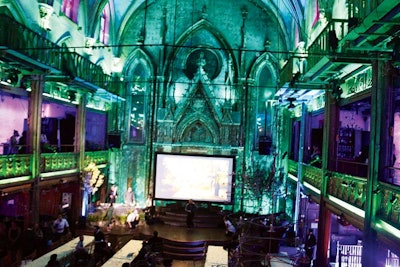
Pantone declared emerald the color of 2013, and planners and designers quickly went green. The jewel-inspired hue showed up in everything from martinis to lighting.
Pictured: Lowline's Anti-Gala

Attendance is no longer a primary measure of an event’s success: Now it’s all about engagement and how much the event strengthened the host brand’s relationship with its customers. Measurement tools vary: Conference planners may use surveys to ask attendees whether the content was relevant. At trade shows, N.F.C. tags and digital floor mats can track interactions with exhibitors. Social media activity also provides valuable metrics, as marketers track attendees’ comments, shares, and likes. Another strategy to enhance engagement is content marketing, which means providing useful, shareable content that is more educational than promotional.

Has New York Fashion Week passed its tipping point? According to attendees and participating designers, the overcrowded schedule and frenzied mobs are overwhelming, while the immediacy of social media and other new technology means the original purpose of the biannual event is vanishing. And, just five years after its giddy launch, Fashion’s Night Out was put on hiatus in the United States, raising questions about whether retailers can afford the cost and effort it takes to create big promotions timed so close to the start of Fashion Week shows.
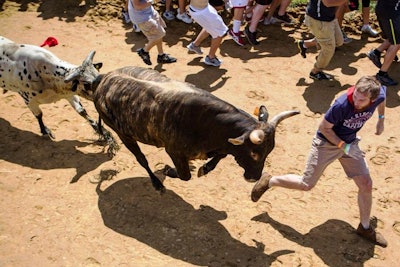
The summer festival season saw a number of tragedies, and officials are calling on producers to make the events safer. The final day of the Electric Zoo festival in New York City was cancelled following the death of two fans, likely from drug-related causes. A drone airplane capturing video of the Great Bull Run crashed into the grandstand at Virginia Motorsports Park, injuring five people. And high winds knocked down a giant LED screen at Ultra Music Festival in Miami, injuring four.
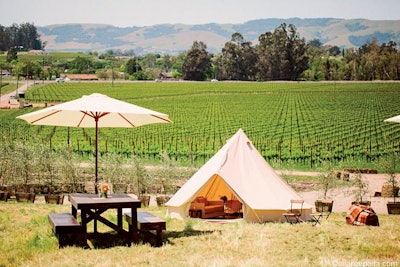
Many events this year had a glamorous camping—also known as glamping—theme, offering modern takes on s’mores, while tricked-out teepee-style tents were outfitted with fairy lights, smokeless fire pits, and reindeer skins. Employees also looked to unplug at luxury camping-theme corporate retreats, such as those produced by San Francisco’s Shelter Company (pictured), where the campgrounds include fully stocked bars, beauty stations, and furnished tents with beds swathed in 400-thread-count sheets.
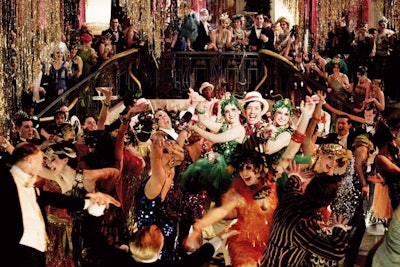
Baz Luhrmann’s adaptation of F. Scott Fitzgerald’s The Great Gatsby hit the big screen in May, setting off a reinvigorated wave of Jazz Age-theme events inspired by Jay Gatsby’s famously decadent parties—think staffers dressed as flappers and mini champagne bottles in lieu of place cards. Heading into the 2013 holiday party season, planners predict that the 1920s trend isn’t going anywhere any time soon.

Though martini swigging and cigar puffing were popular tropes in eras past, planners are finding increasingly healthy ways to engage event guests and form bonds among employees. Hotels have added exercise-based activities including stand-up paddle boarding and sunrise yoga to their teambuilding options, while convention centers are offering healthier menu items and caterers are creating allergen-free snacks.

Parsley, sage, rosemary, and thyme took center stage at culinary and cocktail events, allowing guests to select their own herbs on the spot to add to dishes and drinks. The Season 5 premiere tasting event for Bravo’s Top Chef Masters in New York even offered an interactive herb station—staffed by an herb specialist—that invited guests to guess which garnish was in a large glass vessel based on its look and scent. Wooden breadboards provided written descriptions of each herb, and the answers were displayed on the back.
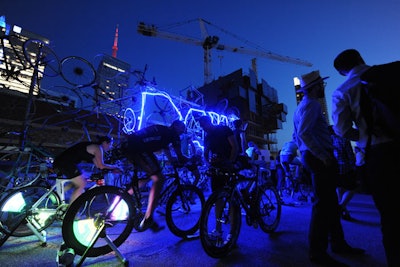
In an effort to go green, planners have long served sustainable fare or sent out invites on recycled paper. Now, human power is playing a role in minimizing events’ carbon footprints. Over the past year, more events were powered by human-generated energy, and vendors relied on it, too: catering via bikes is a rising trend, and Energy Floors offers people-powered, interactive dance floors for rent.
Pictured: Raw Designs' Raw Energy event

Washington celebrated the 57th inauguration of President Barack Obama in January. Although not as splashy as his first, the long weekend of events still had its memorable moments and controversies: Beyoncé admitted to lip-synching the national anthem at the swearing-in ceremony, and Ticketmaster mistakenly sold Inaugural Ball tickets a day early. In a sign of the times, ball guests created a sea of smartphones as they recorded the Obamas dancing while Jennifer Hudson sang.

An I.R.S. conference from 2010 made news this year after an inspector general’s report found fault with the $4 million event in Anaheim, California, over spending on food, speakers, entertainment, and a Star Trek spoof training video. A Congressional oversight committee held hearings, harping on the wasteful spending theme that they developed following the G.S.A. conference scandals in 2012. Defenders said the cost was not out of line for an event for 2,600 senior managers.
Pictured: A still from the Star Trek spoof training video
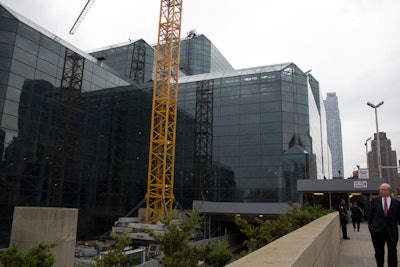
New York Governor Andrew Cuomo’s decision to give the New York Boat Show preferential dates at the Jacob K. Javits Convention Center (pictured)—displacing five trade shows—made waves in the event industry. Both sides eventually reached a compromise, but the flap jeopardized the convention center’s standing in the national event and meeting community, putting it at a competitive disadvantage to other cities.

As filmmakers, musicians, and other creative professionals looked to Kickstarter to raise funds for projects, the event and meeting industry caught on to the crowdfunding craze, too. There are now sites tailored for events, giving planners options to reduce financial risk by collecting funding in advance. Hosts also use the sites to gauge attendee interest, as well as motivate people to purchase tickets early.
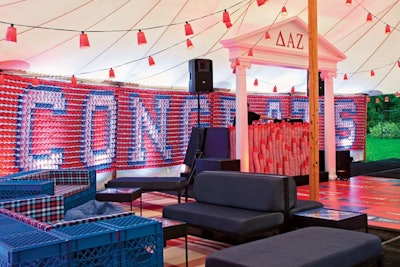
In an increasingly digital age, planners still rely on old-fashioned, low-tech tropes to keep guests entertained. For a private graduation party in June (pictured), David Stark used Solo cups to build an innovative DJ booth, while art magazine Visionaire hosted an event in New York that was covered in sparkling tinfoil. Entertainment had a low-tech hook, too: Guests interacted with an oversize Jenga game, for example, at a Svedka summer bash in Los Angeles.
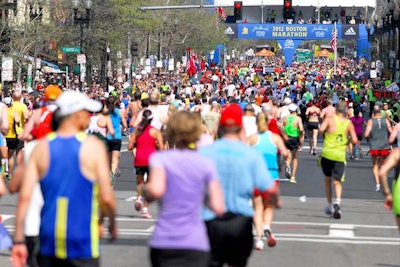
The bombs that went off at the finish line of the Boston Marathon on April 15 affected the event industry as producers of sports events and other large public gatherings reevaluated their security plans. The most immediate effects saw Boston planners wrestling with whether to cancel or continue events as planned. Organizers initially decided to go ahead with the Boston Ballet’s black-tie Balanchine Ball five days after the tragedy, but they eventually opted to reschedule the event in June. Other events across the country, such as MSNBC’s White House Correspondents’ Association Dinner after-party, included tributes and fund-raisers for the bombing victims.
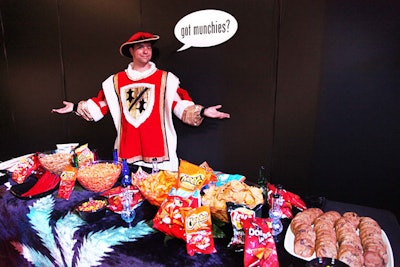
Weed had a big year as an event theme. On April 20—or 4/20 in stoner parlance—in Los Angeles, the Museum of Contemporary Art gala (pictured) paid tribute to pot with bongs as centerpieces, a buffet of munchies, and decor featuring a marijuana leaf motif. Meanwhile, at Hempfest in Seattle, police handed out bags of Doritos as part of “Operation Orange Fingers,” an effort to educate citizens about Washington’s new pot laws.

Perhaps inspired by this year’s Super Bowl host city, New Orleans, planners had fun with masquerade themes. For its Super Bowl party, Playboy put Mardi Gras masks on its Bunnies and had a wall of colorful sequined and feathered masks for guests (pictured). Absolut X, the vodka brand’s high-concept pop-up party, took the theme in another direction with staffers offering futuristic silver masks at the bash’s entrance.
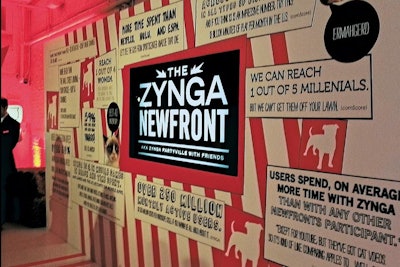
In a sign that advertising attention is shifting away from traditional media, it’s not just TV networks selling their shows to media buyers and ad execs in New York every May: Online video providers and digital brands muscled into upfront territory by hosting NewFronts, a practice that started in 2012. This year saw more companies join the fray, moving the week beyond a one-off experiment with presentations and parties from AOL, Google, Hulu, Yahoo, Disney Interactive, Microsoft, and even mobile gaming brand Zynga (pictured).
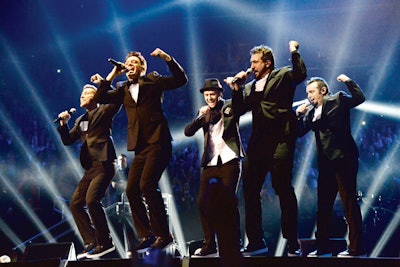
The ’80s are out, and ’90s nostalgia is in. This year the decade was highlighted at a number of events: ‘NSync surprised fans with a reunion at the V.M.A.s (pictured); the Backstreet Boys celebrated the group’s 20th anniversary; and throwback decor at theme bashes included teen-heartthrob-covered step-and-repeats.

As hybrid events grow in number, the concept of online-only events is gaining steam. Fashion brands have already embraced the idea, presenting collections virtually rather than in person, and this year saw other industries getting in on the act. In June, Viacom hosted a 24-hour virtual concert—dubbed the Live Music Day Festival, as part of the O Music Awards (pictured)—allowing viewers to choose which acts and award announcements they wanted to stream. And Société Perrier, water brand Perrier’s online magazine, debuted its virtual music festival in September, a three-day showcase of music, fashion, art, and mixology.
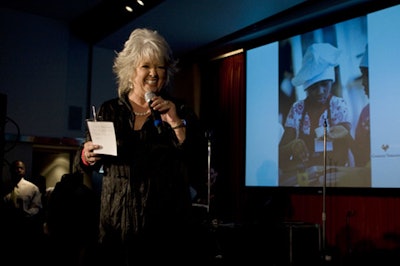
The Southern-fried Food Network personality saw her empire crumble nearly overnight when a deposition became public in which she admitted to using racial slurs and envisioning a plantation-theme wedding for her brother. While Paula Deen lost her TV shows and endorsements, she began her comeback just three months later, hosting a cooking demonstration at the Metropolitan Cooking & Entertaining Show in Houston in September.
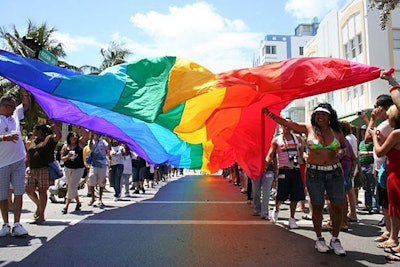
In June, the Supreme Court struck down part of the federal Defense of Marriage Act, stating that same-sex married couples deserve the same rights as heterosexual couples. It also overturned California’s Proposition 8, and the resultant surge of gay weddings is expected to be a major cash infusion for the event industry. Moving to capitalize on the new money-making opportunities around the country are vendors and venues—but it’s not just a financial boon that has industry pros excited for marriage equality: it’s the potential for creative innovations in format and style, as well as new pricing, marketing, and supply-and-demand models.
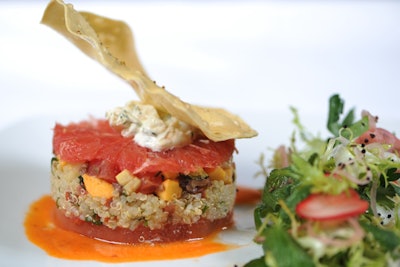
While few may have even heard of the protein-rich, grain-like food a few years ago, quinoa was on menus everywhere this year: The United Nations even declared 2013 the International Year of Quinoa in an bid to raise awareness about its nutritional benefits. One reason caterers are adding the nutty-tasting rice alternative to their dishes in droves is that it’s gluten-free, a dietary issue that is increasingly of concern among event guests. In fact, this year catering companies, conference centers, and hotels across the board aimed to make events easier for those with food restrictions. One event even went so far as to have servers wear menus on their foreheads. And properties like Las Vegas’s Wynn and Encore also continued to develop extensive vegan culinary programs for banquet menus.
Pictured: A Mediterranean salad with quinoa from Abigail Kirsch

This year saw the rise in popularity and size of theme running events, such as the zombified 5K Run for Your Lives (pictured); the Electric Run, a trippy nighttime event with lights and glow-in-the-dark costumes; and the Color Run, where participants get doused in brightly colored powder. Obstacle courses from companies like Tough Mudder have also gone mainstream as big-name brands clamor to sponsor the so-called “mudventures.”
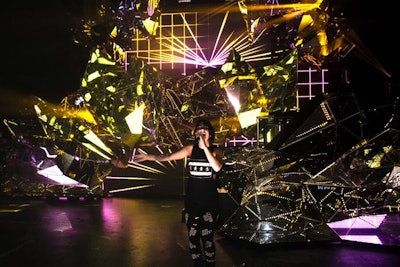
Forget holograms: The latest in audiovisual techniques is “reflection mapping,” a dramatic effect from V Squared Labs that uses mirrors, light, and sculptural form. The visual arts studio teamed up with electronic dance music group Krewella to create the technology as a stage set for the group’s tour (pictured). Dubbed “the Volcano,” the set comprised mapped crystal structures made out of one- and two-way mirrored acrylic plastic outfitted with reflective backing to create an interior mapping effect. Each crystal was also equipped with LEDs or video LED tape inside, creating complex reflection effects that appeared visually to change the structure from within.
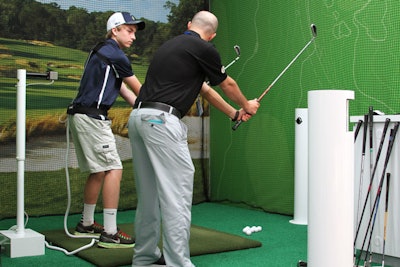
A technology that’s best known for its use in video games is now being used by planners to engage event attendees. Brands such as Pepsi, Nissan, and AT&T are using Microsoft’s Kinect, a hands-free, sensor-based technology, to create experiences that are instantly shareable on social networks. Such systems are also being used in presentations, with speakers able to manipulate screens by gesturing. Other types of motion-sensor technology include pressure-sensitive floor mats, such as products produced by Scanalytics, to track traffic at a trade show.
Pictured: An American Express activation at the U.S. Open in June offered swing analysis using cameras and motion-sensor technology.
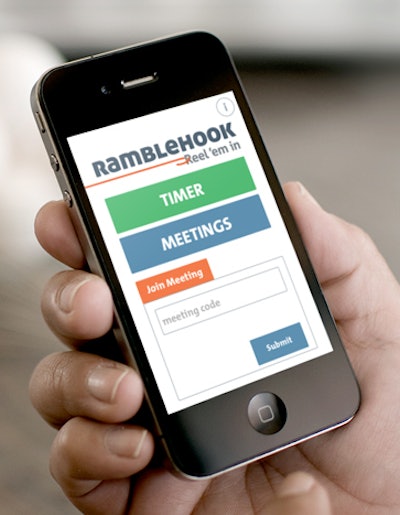
More than ever, marketers are pushing TV viewers to get out their smartphones or tablets and interact. Particularly during televised events, sponsors and advertisers are quick to promote, react, and provide exclusive content via social media channels. For MTV’s Video Music Awards in August, Pepsi offered clues that allowed fans to listen to snippets of two unreleased tracks from Katy Perry’s new album and vote for their favorite, all through a designated hashtag. MTV reporters also took questions from Twitter, Vine, and Instagram for interviews on the red carpet. And in the same vein, planners continue to encourage mobile activity at events, serving information, swag, and even food and drink to attendees using handheld devices.
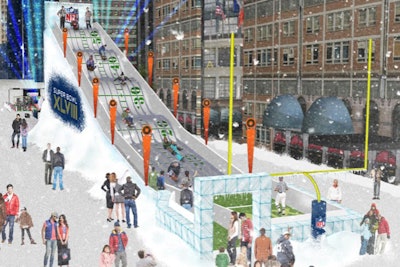
Super Bowl XLVII in New Orleans delivered a spectacular halftime performance from Beyoncé, but the evening will also be remembered for a 30-minute blackout that embarrassed the N.F.L. and the Superdome. Some brands took advantage of the situation, such as Oreo’s now-iconic tweeted blackout ad. As for 2014, the game at MetLife Stadium in New Jersey presents new challenges as the first Super Bowl in the Northeast, and the first in an open-air venue in a cold-weather city. Plans include a 58-foot-tall toboggan as the centerpiece of a 10-block public fan experience in Manhattan, and a halftime show from Bruno Mars.
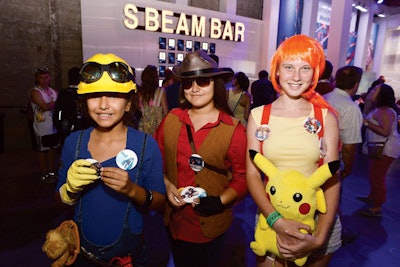
One of the biggest buzzwords of the year was “super fans”—consumers who are passionate about a brand—and marketers rushed to reach their best customers with tailored events. The sudden appeal? Social media allows brands to easily reach their super fans while also giving fans an easy and organic way to share their experience and opinions with others. The attention on engaging such influential customers has pressured planners to create more authentic and inclusive events where guests are invited to actively participate by doing things like voting and creating videos.
Pictured: Fans at Comic-Con in San Deigo
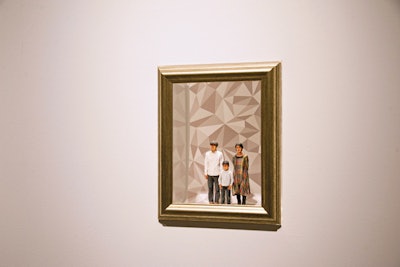
One of the most hyped technologies of the year was 3-D printing, the process of scanning two-dimensional images, then building on them one layer at time using materials such as plastic. With the potential to create quick models of room designs, centerpieces, or party favors, the technology is growing more affordable and is now available at retail outlets. In 2014, key patents that currently limit competition among printer manufacturers will expire—so expect the technology to become more ubiquitous.
Pictured: Omote's 3-D figurines
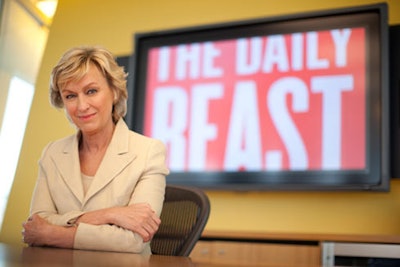
In a surprise move, veteran magazine editor Tina Brown announced she would leave the Daily Beast, the news Web site she founded, and start her own company. The new venture, Tina Brown Live Media, will focus on events, including her Women in the World conferences.

At meetings, time is always of the essence. For their part, caterers are keeping mealtimes more streamlined by offering grab-and-go options for guests who don’t have time to sit down and eat.
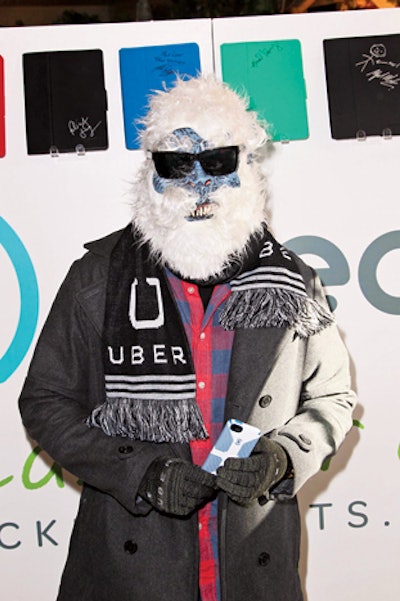
Big experiential promotions put Uber, the car-service mobile app, in the public eye this year. The San Francisco company brought a Yeti to events at the Sundance Film Festival (pictured), invited consumers in 33 cities to request a visit from an ice cream truck, provided stretch limos for Lollapalooza festivalgoers, and even chartered helicopters to the Hamptons during the summer.
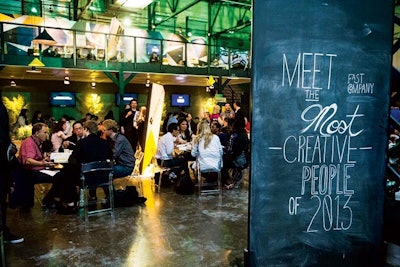
Much like TEDActive, meetings and conferences are placing an emphasis on style and creativity in order to stimulate lively discussions. C2-MTL—the three-day summit in Montreal organized by ad agency Sid Lee—attracted plenty of buzz in its second year by creating immersive experiences and by bringing in big names like Sir Richard Branson, architect Philippe Starck, designer Diane von Furstenberg, and IAC chairman Barry Diller. On a smaller scale, blogger gatherings such as Blogshop are offering intimate classes in quirky, stylized settings.
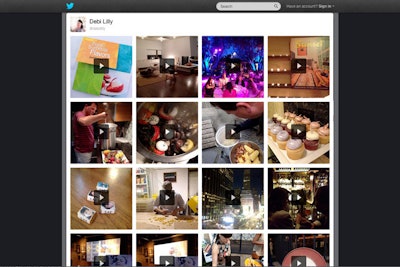
In January, Twitter debuted Vine, a mobile app that allows users to capture and share six-second looping videos. Brands and event professionals jumped onboard, using the service to connect with consumers, colleagues, and clients. The New York International Auto Show shared 73 Vines from the event in the spring, generating 310 shares and reaching 1.8 million people during the two initial days open exclusively to the press. Instagram introduced its own video service in June, adding to the popularity of sharing videos via social media.

Near-field communication, commonly known as N.F.C., is intended for information transfer across just a few inches, while radio frequency identification, or R.F.I.D., has a bigger range. Both technologies are now more frequently employed at events, with organizers embedding tags in wristbands, as well as in badges and other portable devices, to create simple, interactive experiences for attendees. N.F.C.-enabled wristbands are also being used in place of tickets: This year Bonnaroo (pictured) used the devices to expand social engagement by integrating Twitter and music streaming service Spotify.

ESPN is rethinking extreme-sports showcase the X Games. Next year the event moves from Los Angeles to Austin, Texas, while its winter games will remain in Aspen, Colorado. And after an ambitious expansion that included the X Games in Brazil, France, Germany, and Spain, the network announced it would not host any overseas events in 2014.

Also known as millennials, Generation Y comprises people roughly between the ages of 18 and 33. It’s an important demographic for planners and brands looking to build a loyal following into the future. A report by FreemanXP highlighted key elements necessary to attract and engage this group at events, including seamless integration of technology, opportunities for interactivity, games, affordable fees, and sustainability initiatives. The generation’s widespread use of social media also offers opportunities for planners: At an event in Washington hosted by retailer South Moon Under and Rock the Vote (pictured), gift bags went to partygoers who tweeted about products displayed by the event’s sponsors.
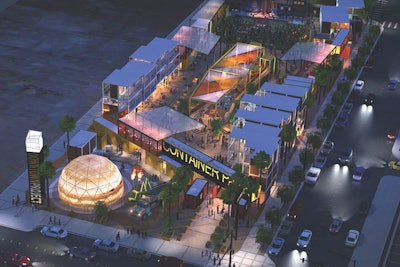
Tony Hsieh, the C.E.O. of Zappos, is at the center of the Downtown Project, a community group with $350 million in funding and a mission to “transform downtown Las Vegas into the most community-focused large city in the world.” The creative entrepreneur even moved his company’s headquarters to the area in the fall, looking to remove the stigma associated with the neighborhood and bring in new business. A key part of the group’s strategy is using events to create a sense of community among residents and show off its work to out-of-towners. The largest such event initiative was October’s Life Is Beautiful festival, started by Rehan Choudhry, the former director of entertainment and events at the Cosmopolitan hotel on the Strip.
Pictured: Downtown Project's Business Park

















